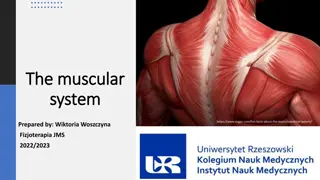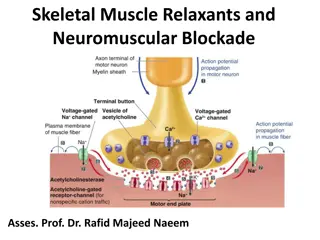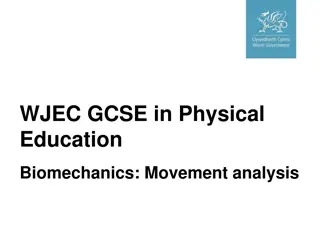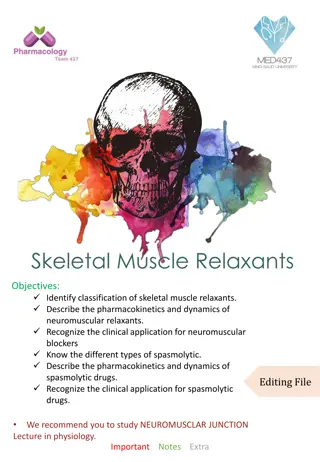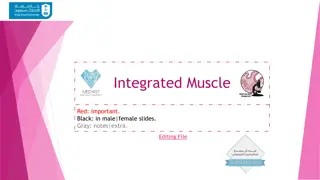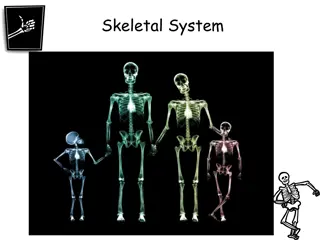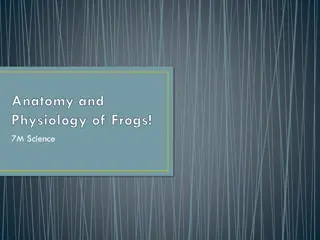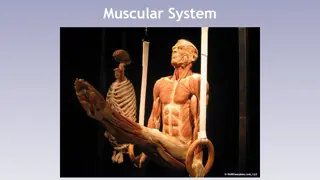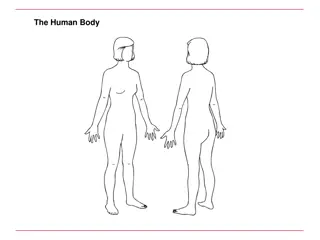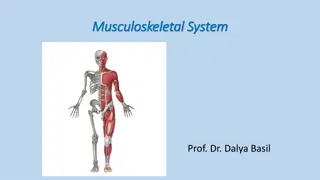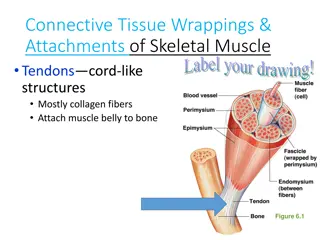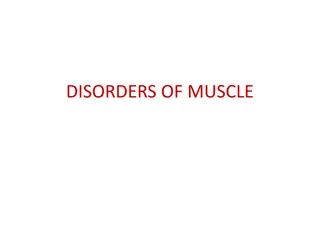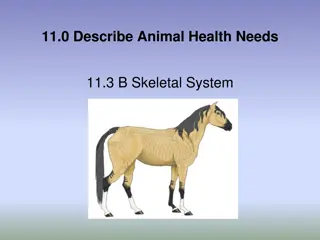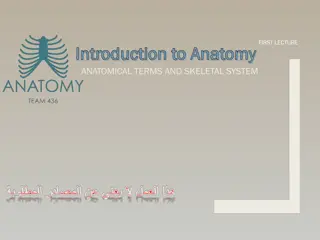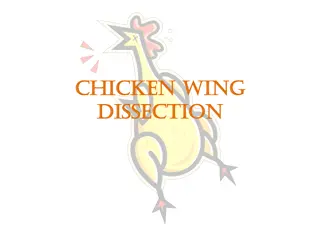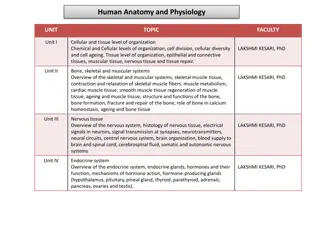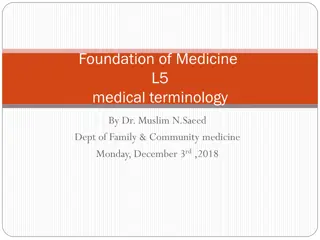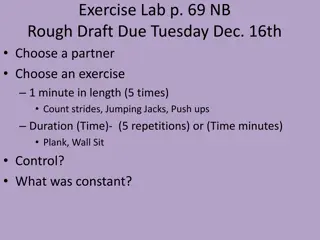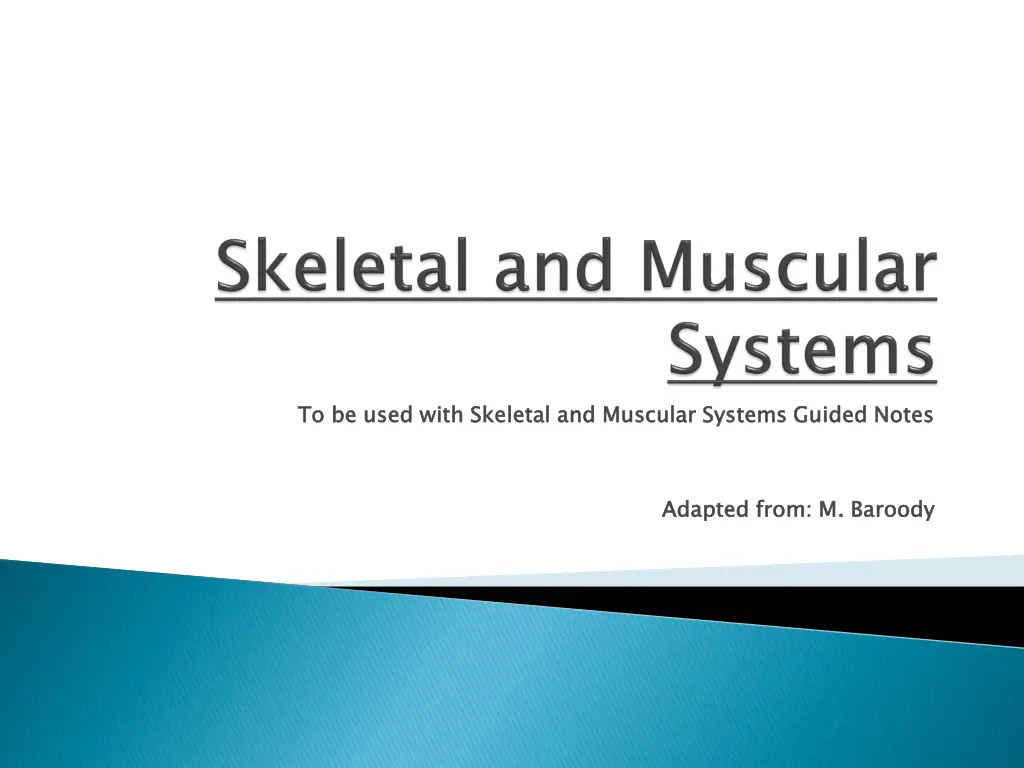
Understanding Skeletal and Muscular Systems
Explore the essential functions of the skeleton and muscles, including support, protection, and movement. Learn about the importance of locomotion for survival and the roles of ligaments, tendons, and cartilage in enabling movement. Discover why movement is vital for all living organisms.
Download Presentation

Please find below an Image/Link to download the presentation.
The content on the website is provided AS IS for your information and personal use only. It may not be sold, licensed, or shared on other websites without obtaining consent from the author. If you encounter any issues during the download, it is possible that the publisher has removed the file from their server.
You are allowed to download the files provided on this website for personal or commercial use, subject to the condition that they are used lawfully. All files are the property of their respective owners.
The content on the website is provided AS IS for your information and personal use only. It may not be sold, licensed, or shared on other websites without obtaining consent from the author.
E N D
Presentation Transcript
To be used with Skeletal and Muscular Systems Guided Notes To be used with Skeletal and Muscular Systems Guided Notes Adapted from: M Adapted from: M. . Baroody Baroody
Movement is a Life Function for all living things Locomotion: organism Locomotion: change in position of an Tropism Walking/Sliding
Why do we need to move? Survival Value of Locomotion 1. Get food and shelter 2. Escape from predators 3. Move to regions better suited to survival 4. Find mates 5. Move away from toxic wastes
What allows us to move? Skeleton and Muscles
Functions of the skeleton: 1. Supporting framework for internal organs and tissues. 2. Anchorage sites for muscle action. 3. Protects the internal organs. 4. Provides leverage for body movement. 5. Blood cells are produced in the bone marrow. The bones also store minerals.
Cartilage: tough, fibrous, elastic connective tissue Cartilage Functions 1. Pliable (stretchable) support 2. Flexibility of joints 3. Cushioning of joints Cartilage makes up most of the embryo's skeleton. Most of this cartilage changes to bone by adulthood.
Ligaments connect bones to bones (joints) tough and elastic Ligaments:
Provided by Nucleus Communications, Inc. Tendons tough inelastic fibrous cords which attach muscles to bones Tendons:
A is a tendon (it connects the bone at D to the muscle at B) C is a ligament (connects bones)
Muscles only body tissue able to contract create movement by flexing and extending joints body energy converters (many muscle cells contain many mitochondria) Muscles
Smooth Muscle: Smooth in appearance Involuntary in action Slowly contracting but contractions are long in duration Lines blood vessels, alimentary canal, and body openings
Skeletal Muscle Voluntary in action Contain many striped long fibers called striations Found in association with skeletal bones the nervous system interacts with skeletal muscles to produce motion
Cardiac Muscle: Resembles skeletal muscle with lined appearance Involuntary in action Composes the hardest working muscle-- the heart
Myosin, Actin, Cross-bridges Muscles can only pull, cannot push Voluntary Can control Such as: Involuntary Cannot control Such as: Force increases with the number of fibers that are stimulated
Violent muscle contractions require a lot of oxygen. If oxygen is not available muscle fatigue will set in. Muscle fatigue: results from oxygen debt lactic acid accumulates in skeletal muscles rest restores the oxygen balance
Arthritis Arthritis: joint inflammation
Tendonitis junctures a common condition in athletes Tendonitis: tendon inflammation at bone
Types of bone breaks (fractures): Range from a simple fracture to a compound fracture
Cranial Cavity Holds the Brain and is bounded by the skull
Thoracic Cavity Holds the lungs and heart and is bounded by the ribs, sternum, diaphragm, and spine
Abdominal Cavity Holds the stomach, pancreas, liver, small intestine, large intestine, kidneys, spleen, bladder, and reproductive organs. Bounded by the diaphragm, ribs, abdominal muscle, and pelvis

